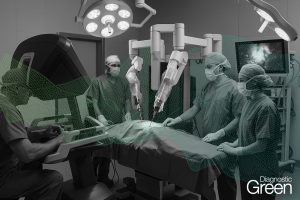Background: Minimally invasive anatomical resection (AR) for posterosuperior lesions is technically challenging. The Glissonean approach or puncture technique is generally selected. The tumor-feeding portal pedicle compression AR (C-AR) is an established procedure in open surgery. This technique has benefited from the association with indocyanine green (ICG) fluorescence, used to enhance the anatomical area to be resected.Recently, C-AR via the minimal access approach has been reported. Herein, we report the first cases of laparoscopic and robotic segment 7 (S7) segmentectomy using the ICG-enhanced compression technique.
Patients and methods: Two cases of CHILD-class A hepatocellular carcinoma (HCC) in segment 7 with a liver stiffness less than 7 kPa treated by laparoscopic and robotic anatomical S7 segmentectomies were reported. Pathologic findings demonstrated a 4.9 cm and 7.3 cm HCC with a R0-resection margin (> 1 cm in both). Postoperative complications were nil. The patients were discharged 6 days after surgery.
Conclusions: This preliminary experience shows that the C-AR is a feasible and reliable technique in laparoscopic and robotic approach for posterosuperior lesions. Further studies are needed to investigate its applicability and standardization.




